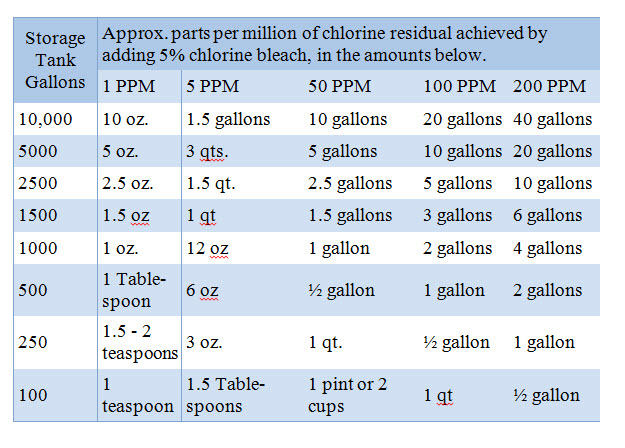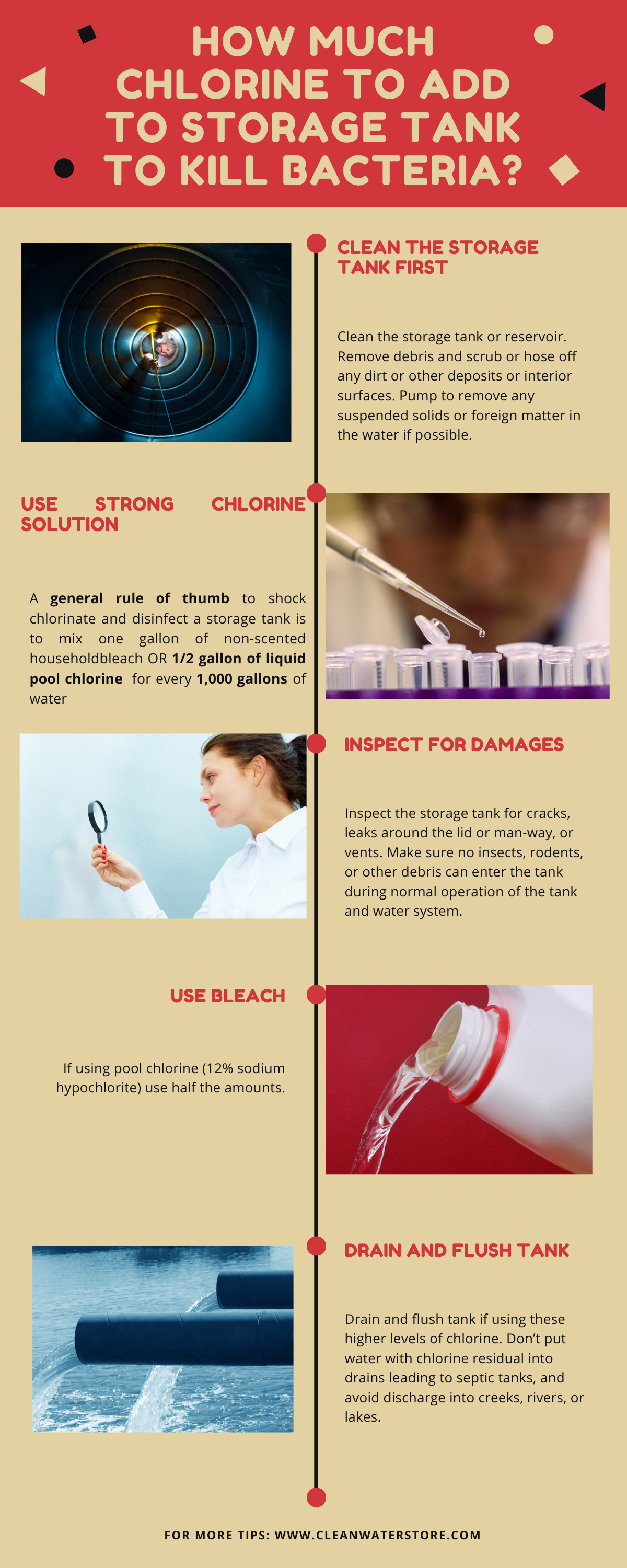Clean drinking water is a necessity for human health and well-being. Without it, people can become sick, and even die. Chlorine is a chemical that is used to disinfect water and make it safe for drinking. But how much chlorine is required to effectively disinfect water?
This article will provide an overview of the various methods of disinfecting water, the amount of chlorine needed for each method, and the benefits and limitations of using chlorine to purify water. By the end of this article, you will have a better understanding of the importance of achieving an adequate chlorine level in drinking water and the methods to do so.

How Much Chlorine is Required to Disinfect Water?
Chlorine is an important and effective disinfectant used to make water safe to drink. It is added to drinking water to kill harmful bacteria, viruses, and other microorganisms that can cause a variety of illnesses. Chlorine is often added to water in varying amounts to ensure that a safe level of chlorine is present in the water supply.
Chlorine has been used to disinfect water for over 100 years, making it one of the most commonly used disinfectants in the world. However, determining the correct amount of chlorine needed to effectively disinfect water can be a complex process. This article will explain how much chlorine is required to disinfect water.
Factors that Affect Chlorine Levels
The amount of chlorine needed to effectively disinfect water depends on a variety of factors, including the water temperature, pH level, and total organic carbon (TOC) level. Higher temperatures and higher pH levels require more chlorine to be effective, while lower temperatures and lower pH levels require less chlorine. TOC levels also play a role, as higher levels require more chlorine to be effective.
In addition to these factors, the type of water being treated also affects the amount of chlorine required. Surface water, such as lakes or rivers, typically requires more chlorine than groundwater. This is because surface water is more likely to contain a variety of contaminants, such as bacteria, viruses, and algae, that need to be killed by the chlorine.
Chlorine Dosage
The amount of chlorine needed to effectively disinfect water is typically measured in milligrams per liter (mg/L). The recommended chlorine dosage for drinking water is between 0.2 and 4 mg/L, depending on the water temperature, pH level, and TOC level. Higher doses of chlorine may be necessary for water that is contaminated with bacteria, viruses, or other microorganisms.
In order to ensure the water is properly disinfected, the chlorine needs to be present in the water for a period of time. This is known as the “contact time.” The contact time varies depending on the type of water being treated, the chlorine concentration, and the temperature of the water. In general, the contact time should be at least 30 minutes for surface water and 15 minutes for groundwater.
Monitoring Chlorine Levels
Once the chlorine has been added to the water supply, it is important to monitor the chlorine levels to ensure they remain within the recommended range. This can be done by testing the water with a chlorine test kit or by having a water quality professional test the water. It is also important to test the water after any changes in the water temperature, pH level, or TOC level.
Monitoring the chlorine levels in the water supply is an important part of ensuring safe drinking water. It is also important to periodically test the water for bacteria and other contaminants to ensure the water is safe to drink. Testing the water regularly will help to ensure the water is safe and free of contaminants.
Frequently Asked Questions: How Much Chlorine Is Required to Disinfect Water?
Chlorine is a powerful disinfectant and is used to kill harmful bacteria, viruses, and other microorganisms in water. It is important to understand how much chlorine is needed to effectively disinfect water and ensure it is safe for human consumption.
How Does Chlorine Disinfect Water?
Chlorine works as a disinfectant by oxidizing and breaking down the cell walls of bacteria, viruses, and other microorganisms. The chlorine reacts with water to form hypochlorous acid, a powerful disinfectant that is effective at killing a wide range of microorganisms. Chlorine’s effectiveness as a disinfectant is dependent on the concentration of chlorine in the water, the pH of the water, and the contact time, or how long the water is in contact with the chlorine.
What Is the Recommended Level of Chlorine to Disinfect Water?
The recommended level of chlorine to disinfect water is 0.2–0.5 parts per million (ppm). This level of chlorine is considered to be the minimum amount necessary to effectively disinfect water. Some water supplies may require higher concentrations of chlorine, depending on the level of contamination.
What Is the Best Way to Add Chlorine to Water?
The best way to add chlorine to water is to use a chlorine solution. This solution is typically a mixture of chlorine and water, and is available in liquid, granular, and tablet forms. The solution should be added directly to the water supply, and mixed thoroughly. For larger water supplies, a chlorine feeder may be used to more accurately control the amount of chlorine being added to the water.
Are There Any Risks Associated with Adding Too Much Chlorine to Water?
Yes, adding too much chlorine to water can have a negative impact on health. Chlorine is a strong oxidant, and can cause damage to the cells and tissues in the body if consumed in large amounts. Additionally, too much chlorine can give water an unpleasant taste and odor. It is important to follow the recommended levels of chlorine when disinfecting water.
What Are Some Alternatives to Chlorine for Disinfecting Water?
Chlorine is the most commonly used disinfectant for water, however, there are other methods that can be used. Ultraviolet (UV) radiation is a chemical-free method of disinfecting water, and is effective against a wide range of microorganisms. Ozone, a powerful oxidant, is also an effective disinfectant, although it is more expensive and requires specialized equipment. Other methods, such as filtration and boiling, can also be used to remove bacteria and other microorganisms from water.

Water disinfection with chlorine
In conclusion, chlorine is an essential part of disinfecting water, as it plays a vital role in killing harmful bacteria and preventing waterborne diseases. The amount of chlorine required to properly disinfect water depends upon a variety of factors, including the amount of water, the temperature of the water, the pH of the water, and the concentration of organic material in the water. All of these factors must be taken into account when determining the correct amount of chlorine required to properly disinfect water. Ultimately, the best advice is to consult with a professional who can provide the most accurate information regarding how much chlorine is needed to disinfect water.
